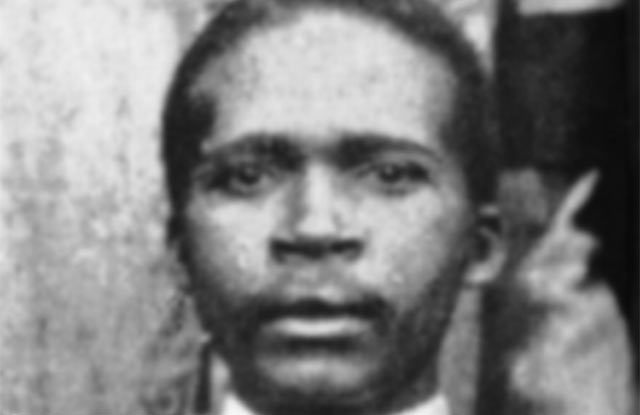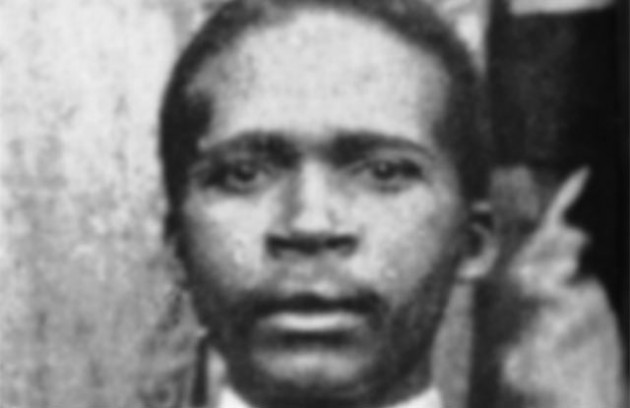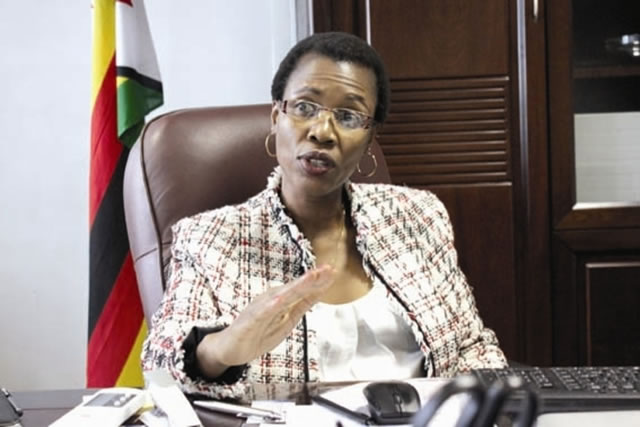Bernard Mizeki: Story of an African martyr


Bernard Mizeki
Dr Sekai Nzenza on Wednesday
It is almost midnight and the full moon rises over the hill. A big woman steps on to the stage with a microphone. Then she raises her voice and sings: “Tawanirwa nyasha!” Many voices join in. I am sitting on the ground near the stage among uniformed Anglican women.
The drum and hosho resonate and we all rise to dance. There are thousands of us here, from all over Zimbabwe and some from Malawi, Mozambique, South Africa and Zambia.
The soloist’s voice can be heard across the foothills of the mountain, reaching out to thousands who have gathered here for the annual celebration to remember Bernard Mizeki, an African Anglican martyr who was killed by the Mangwende people in 1896 for his faith.
I am a lapsed Anglican, struggling to connect with Mizeki and also with Jesus Christ. My parents were Anglican. They married at Christ the King Daramombe Mission in 1947. Around 1948, my father came back to the village and built the first grass-thatched school that he called Mufudzi Wakanaka School or the Good Shepherd. The school is still there and among the people gathered here at this commemoration of Bernard Mizeki are people from my father’s school.
I am here to remember the legacy of the times gone by, when my grandmother Mbuya VaMandirowesa used to argue so much with my parents over Christianity. Mbuya was against the church, especially the missionaries. She did not believe in Jesus Christ or the whole idea of sin. While there was never a direct confrontation between Mbuya and my parents, we all knew that going to church was a way for us to get education. “Education is the future,” my father used to say.
Years later, I am back to the Anglican Church. We had arrived at the shrine with my cousin Mai Munyaradzi, the Anglican deacon at Mufudzi Wakanaka School. We brought along fried rice, salad, chicken, water and soft drinks. Since we are in June and it’s very cold at night, we also carried heavy coats and blankets because we’re going to be singing and dancing all night.
At 6am on Sunday morning, Bishop Chad Gandiya of the Church of the Province of Central Africa (CPCA), who survived the conflict over property rights with Bishop Nolbert Kunonga, would lead us in the Holy Communion supported by many of his priests.
When we arrived on Saturday afternoon, we climbed up the hill to join many pilgrims who pray at the big stone boulders where Bernard used to pray and meditate. It is a most scenic place. I had stood there, in the glorious golden sunset, listening to people praying with heads bowed around the shrine. I eavesdropped on their prayers and hoped that Bernard was listening to them, so he could speak on their behalf and take their prayers to God, Mwari.
Who was Bernard Mizeki? Why do thousands of Anglicans gather to commemorate him near Marondera, in Chief Mangwende’s land?
Bernard Mizeki was born in Inhambane, Mozambique, in 1861. His real name at birth was Mamiyeri Mitseka Gwambe. He worked as storekeeper for a European trader for a brief period. After his mother died, when he was only 12 or 14 years of age, Mizeki travelled to Cape Town by ship.
In Cape Town Bernard Mizeki worked at the docks, loading and unloading the steamships and sailing vessels. Then he found work as a house servant and gardener for an English family. During this time, Mizeki was introduced to the Cowley Fathers, missionaries based at St Philip’s Zonnebloem. He attended school conducted by a German missionary called Fraulein von Bloemberg. She took a strong interest in Bernard and taught him how to read and write.
When Bernard Mizeki understood the meaning of God, he is quoted in one book talking to Fraulein von Bloemberg: “This is something that I have not known. I ought to have done something for God, working for Him and serving Him, if He cares for me so much. Do tell Him, Inkosazana, that I am very sorry that I have not done anything for Him, yet, but I didn’t know about Him at all.”
On March 7 1886, Mamiyere Mitseka Gwambe was baptised and called Bernard Mizeki, at St Philip’s Church in Cape Town. From that time onwards, Bernard is said to have become a very strong Christian. He started working at the boarding house at St Columbus helping to teach the scriptures. At the same time, he leant a number of languages, including Zulu, Greek, Latin and Hebrew. He became an interpreter for Fraulein and together, they went to preach the gospel to nearby communities in Cape Town.
In 1891, Mizeki left Cape Town and travelled to Mashonaland with Bishop George William Knight-Bruce, who had been appointed by the Anglican Church as the catechist responsible for converting the Shona people. They were well received by Chief Mangwende Mungati in 1891.
Bishop Knight-Bruce and Bernard Mizeki preached the word of God to the Shona people. At that time, it was not as if the Shona people did not know God. They did. The Shona believed in the existence of God, Mwari, the Creator and Musikavanhu. Any communication with Mwari was done through the ancestors. These ancestors were living, as they still do now, and they cared very much about people’s physical and spiritual well-being. But Jesus Christ was not part of the Shona spiritual worship.
The missionaries, supported by Mizeki, taught that the involvement of ancestors was unChristian, primitive and pagan. In 1894 Bernard and his pupil John Kapuya and the Zulu catechist, Frank Ziqubu, helped Bishop Knight-Bruce to translate the Lord’s Prayer, the 10 Commandments and the Creed, into Shona.
Some people at Mangwende kraal were converted. Mizeki was not only an interpreter for the Anglican Diocese of Mashonaland but he also translated for the High Court in Harare, working as a civil servant since he had mastered the Shona language very well.
Chief Mangwende’s wife, hosi yamambo, called VaZvandiparira, became a good friend to Bernard. She introduced him to Mutwa, the chief’s granddaughter. Bernard and Mutwa fell in love and got married. The wedding took place on March 6 1896 at Rusape. It was conducted by the first African priest known as Rev. Hezekiah Mtobi.
Mizeki’s marriage to Mutwa happened at a time when the Ndebele and the Shona people were revolting against Cecil John Rhodes’ British South Africa Company, BSAC, who were on a mission to colonise this country and take over the land. This was the beginning of the First Chimurenga.
Christianity was seen as a gospel that supported the colonialists in their takeover of the land. When the uprising started, Africans associated with Europeans risked being killed.
On June 14 1896, Reverend Foster sent a message to Bernard Mizeki asking him to leave Mangwende’s area at once and go to the mission farm at St Augustine’s in Penhalonga. Bernard is said to have agonised over the warning. He wrote to Foster saying he had decided to stay. Besides, he could not leave Mutwa, who was by then pregnant.
Bernard wrote a letter to Rev. Foster in which he said: “Mangwende’s people are suffering. The Bishop has put me here and told me to remain. Until the Bishop returns, here I must stay. I cannot leave my people now in a time of such darkness.”
On June 18 1896, three men arrived at the mission. They assaulted, stabbed and dragged Bernard Mizeki away from his home. In the morning, his wife Mutwa found him still alive and went to call for help. When she returned with other relatives, Bernard had disappeared from the place where she had left him. Instead, they witnessed a “great white light all over that place, and a loud noise like many wings of great birds”. Bernard Mizeki’s body was never found. Later on, it was discovered that Mizeki was murdered by Muchemwa, Mangwende’s son, and his uncles Saridyo, Zihute and Bodyo.
From that time onwards, Bernard was seen as the martyr who sowed the seeds of the gospel in Mashonaland. A shrine was built at his home. Close to this shrine, an Anglican boarding school, Bernard Mizeki College, was built for boys.
An annual event to commemorate Bernard Mizeki is held at the place Bernard called home with his wife Mutwa. You can still see the old fireplace where the newly married cooked sadza and other food. A big stone at the top of the hill where Bernard is supposed to have been taken away by a cloud became a shrine where the faithful go and pray.
So, on June 19 2016, it’s after midnight and I am here, at the shrine of Bernard Mizeki. Listening to the drum beat at dawn, I almost forget that this is a Christian ceremony, because the drum, hosho, singing and dancing are so similar to what we do when we honour the ancestors during a bira ceremony, back in the village.
The women around me are from Bonda Mission, in Manicaland. I am the only one without an Anglican uniform and I somehow feel inadequate. But nobody seems to care or even question. We are here to celebrate being together. A sense of hunhu, ubuntu, seems to engulf us more than the feeling of being close to God, Mwari Musiki.
Bernard Mizeki has brought a sense of unity, belonging and joy. It is a bira, to honour a man who others may see as controversial, but nonetheless, a man who forms part of the Christian history of our country.
- Dr Sekai Nzenza is a writer and cultural critic.











Comments